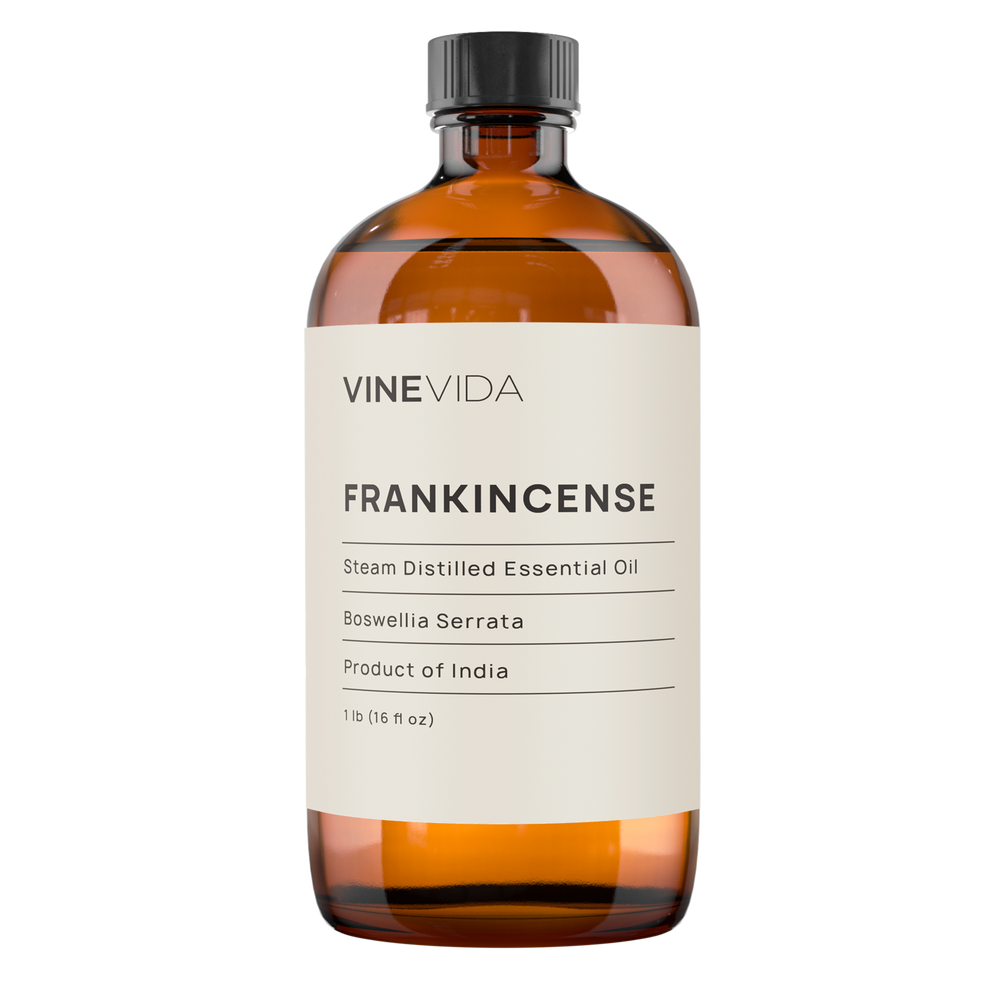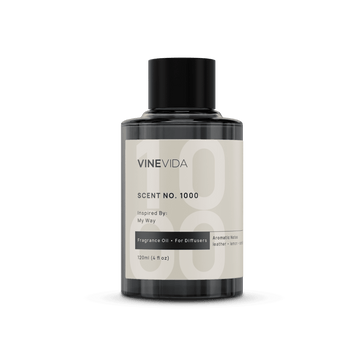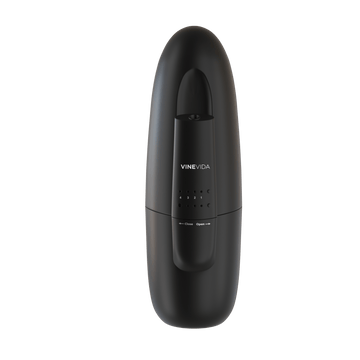The worst thing about sinus congestion is the pressure. We have four sinuses, which house the olfactory nerves that send messages about fragrance to the brain. They also act as sound boxes for the voice, which is why we sound so odd when we have colds. There is no room for the sound to resonate. The sinuses run across the cheekbones, across the forehead, and up to the top of the head. This is also why essential oils will help you breathe easier and relieve your headache. The problem is, of course, it’s not only colds that can cause this congestion. This post will investigate some of the best essential oils for sinus problems, which work best in different situations, and some professional tips on using them.
Sinus Infections: What Causes Them?
Sinus infections happen when fluid the air-filled pockets in the face (sinuses) fill up with fluid. This creates the perfect environment for germs to grow. Viruses cause most sinus infections but can sometimes be caused by bacteria...
What Are The Health Benefits Of Essential Oils For Sinus Treatment?
Historically, we might have rushed to the doctors to get antibiotics. However, it is now shown that many pathogens are becoming antibiotic-resistant because we have used them way too much. Most sinus infections will clear up within two to three weeks without any interventions, so the doctor is now unlikely to prescribe any treatments.
Natural sinus relief essential oils penetrate blockages and support healthy immune responses. In addition, most of the oils used for sinus infections have invigorating and uplifting properties helping you face the day, even if you feel under the weather.
Also Read: Best Essential Oils for Congestion
How to Use Essential Oils For Sinus Infection
Essential oils have three main ways of entering the body. The skin is a semi-permeable organ, so oils can absorb it to enter the bloodstream. They are also taken via the respiratory system into the lungs and the brain.
So the question would be, what do you want them to achieve?
If you want to get the nose running to shift fluid buildup, inhaling the oil in steam will be your best bet. Get a bowl of boiling water and put a couple of decongestant oils in - we’d recommend eucalyptus and Myrrh. Then take a large towel and drape it over your head so you trap your head in the steam. Keep your face far enough from the steam that it cannot scald, and take regular breaks from the steam. Ideally, you’ll manage around five minutes total, but the treatment is intense, so stop as soon as you feel ready.
Applying oils to the skin over the sinuses can also be very helpful. Again, the oils will work fast, which is a great way to use them repeatedly throughout the day.
Simply inhaling them from the bottle can be extremely beneficial, or making blends for sniffy sticks. We do not recommend putting the sticks directly into your nose, however. This can be painful for very inflamed sinuses.
Also Read: Best Essential Oils for Allergies
What Are The Best Essential Oils For Sinus?
1. Eucalyptus Essential Oil
Eucalyptus is the best essential oil for sinus congestion. It is probably the fastest-acting of essential oils to clear sinuses. Even as you breathe in the fumes (properly known as the volatiles), the chemicals work quickly, unblocking the sinuses as they go.
There are around 300 eucalyptus trees, many of which have essential oils on the market today, all with different chemistries. Indeed, it is an oil many aromatherapists collect. They have a commonality: they all have this penetrating, decongestant action. Eucalypts are the best essential oils for sinus problems if you are an adult.
Not only is it good for the congestion itself, but eucalypts are the best essential oils for sinus infections. They have antimicrobial, antibiotic, and antiseptic actions, supporting the immune system's fight against invading pathogens. Eucalyptus has a gentle, helpful action on fevers too.
Beware of using eucalyptus on small children, in any case. Especially do not place it on their pillows to help them breathe. Eucalyptus is high in a constituent called 1,8 cineole, which is wonderful for the immune system but also slows respiration, so we should not use it close to their faces. It can be useful to massage it (in dilutions of less than 0.25%) onto the upper back and neck. More explained on that in the pine section.
Like any other essential oil, eucalyptus should not be used in the first 16 weeks of pregnancy.
So, that’s frustrating. So what essential oil is good for the sinuses in children?
2. Frankincense Essential Oil
We are big advocates of a drop of frankincense on the top of a teddy bear's head! We also advocate keeping said teddy bear till you are 32! Nothing is more comforting or reassuring than the scent of frankincense when you’re ill. Apart from eucalyptus, it is the best essential oil for a stuffy nose. Not only is it beautifully soothing, but it also slows the breath and helps them drift off to sleep. Frankincense (and maybe niaouli and myrtle) are children’s favorite essential oils for sinus pressure. We’d say this is probably the gentles of the essential oils to clear sinuses. Nevertheless, it works well.
Frankincense is the best essential oil for sinus congestion and soothing upset and poor children.
Its actions are not only limited to children. Everyone benefits from this one. It’s also one of the best essential oils for the sinus congestion that’s not infection-related. Perhaps you suffer from hay fever or allergies? Use Melissa essential oil as a natural anti-allergenic, chamomile to soothe the itching and soreness, and frankincense to clear the nose. This is the best blend of essential oils for sinus allergies.
But…!
Scientists believe that if we continue to harvest frankincense essential oil at the rate we are, there is a likelihood that there will be none left by 2050.
Think about that for a moment. One of the most famous medicinal plants in the world, for at least four millennia, could be gone in our lifetime. Please pledge always to be mindful of every drop of frankincense you use. We want people to still list frankincense as one of the best essential oils for sinus infection another two hundred years from now.
Safety: Not suitable for use in the first 16 weeks of pregnancy.
3. Myrrh Essential Oil
Frankincense and Myrrh are at the top of the list of the best essential oils for sinus congestion, but their actions are different. Frankincense is subtle and gentle, as if angels are listing magic over your nose. Myrrh is like the sledgehammer of essential oils to clear sinuses! We’d rate Myrrh and eucalyptus as being in the equal first place as the best essential oil for sinus drainage. Both break down the congestion and make the snot flow! Charming, I know, sorry. Thank me later. You’ve got half a dozen tissues to deal with first.
Consider blending with lemon and tea tree and massaging it over the cheekbones for almost instantaneous relief. It is a superb essential oil for sinus headaches. Myrrh and tea tree both contain antibiotic constituents that support healthy immune function. Myrrh has demonstrated effectiveness against staphylococcus aureus (Xiao, 2020), a pathogen often associated with respiratory infections, including sinus infections. (Vickery, 2019)
The problem with oils that work fast on catarrh is that they melt them, so you have this continuous running fluid. It’s best not to use this one on children, not because it’s not safe, but more because it can create more problems than you had before. You start with congestion, and you end up with a cough as they try to manage the drip, drip down their throats when they are in bed.
Lemon, Myrrh, and tea tree are the best essential oils for sinus issues when you have to be up and at it. It is quick, fast-acting, and alert.
We also love this blend if you suffer from a long-term congestion problem.
Even though Myrrh is high on the list of the best essential oils for sinus congestion, it is also a uterine tonic. You must not use it in the first 37 weeks of pregnancy. It is suitable in those last few days and safe if breastfeeding. However, even The Bible describes the bitter taste of Myrrh. It can even pass through the mother’s milk, so your baby might not be a fan.
4. Fir Essential Oil
One of the key things to learning aromatherapy well is understanding that essential oils happen because plants evolve and respond to the environments they are exposed to. Indeed, the more stressed an organism is, the better the essential oils can be made of it.
A common misconception is that plants have essential oils. They don’t. What happens is that they find a situation they need to respond to, and they change their chemistry accordingly. We call the chemicals they make secondary metabolites (“secondary” because they don’t need them to respirate. These are the chemicals they make to make survival easier and better). The essential oils are the oily parts of these metabolites that pass through distillation.
This helps us to make assumptions about what the plant can do. This is how plants were investigated in 1600 when a man called Paracelsus developed a theory called the “Doctrine of Signatures.” This is what the plant knows.
Consider what a Siberian Fir knows. First and foremost, the conifers know about extreme temperatures, in particular, cold. The conifers were the first of any of our plants. They are the ancient ones that have seen many changes. In response to millions of years (about 40 million), they have developed needles instead of leaves to be more resistant to the cold and to be able to respirate better.
Even the essential oil retains the needles penetrating action. It pierces congestion and allows the air to make its way through. We stoke Siberian Fir and Balsam Pine, but the action is similar across the genus; they all know how to cope with air in the cold.
Blending fir and pine essential oils makes a wonderful home nose diffuser blend.
5. Hyssop Essential Oil
Hyssop is one of the best essential oils for sinus congestion but is also one of the most difficult ones to use. Let’s tell you about the good stuff first. There is no better oil for dealing with congestion generally. I mean sinus congestion, phlegm from chest infections, compacted skin, and infected lungs. Hyssop essential oil is rich in a chemical group called ketones. Ketones are wonderful for congestion generally because they can break things down. Aromatherapist Dr. Malte Hozzel speaks of ketones as “the disincarnation.” They disincarnate physical congestion, like catarrh and scar tissue, but they disincarnate reality too. They can make it feel as if your personality no longer sits inside your body.
For most people, that is not troublesome. You feel a bit floaty, but you are probably more interested that you can suddenly breathe better than anything else. However, this can be very problematic for people with schizophrenia, who have psychosis or any delusion issues. It is not an oil that we would advise if you suffer from epilepsy or seizures, either.
Hyssop should not be used in the first 16 weeks of pregnancy and is not a great choice for children.
6. Peppermint Essential Oil
Peppermint has superb cutting action and is particularly good for sinus congestion and headaches. It’s also a good addition to your collection of essential oils for sinuses and allergies. We would avoid peppermint at night, however. Peppermint has a cephalic action, meaning it clears the mind. Clearing in the way that suddenly you need to contemplate the complexities of Einstein’s Theory of Relativity. It is not conducive to sleep!
There’s not much more to say about it other than, like eucalyptus, this would not be a good choice for children. Eucalyptus has 1,8 cineole, and peppermint has menthol. They are both problematic for children for the same reasons.
7. Ravensara Essential Oil
Ravensara has strong antibiotic properties. We will choose this if we have a full-on breakout of the mang! One drop in a blend is superb. It is a very powerful oil. For this reason, it is not suitable for use on children or during pregnancy; we don’t recommend putting it into the bath.
8. Copaiba Essential Oil
Copaiba is extremely good at supporting the immune system. Visit the product listing to understand the intricacies of why that is. It hasn’t made its way onto the list of the best essential oils for sinus because it is especially good at snot busting, but if you have a germ that has decided it would rather not move out, the copaiba can be a brilliant help.
Not suitable for use in the first 16 weeks of pregnancy.
9. Tea Tree Essential Oil
Again, the tea tree is not particularly decongestant in its own right, but any time there might be an underpinning infection, we want to use some tea tree. Long with Myrrh and ravensara, tea tree is one of the best essential oils for sinus infections. Please don’t use this one on its own; use it with something like eucalyptus, Myrrh, or frankincense to relieve the sinus pressure. Then tea trees will do their magic in supporting the immune system.
10. Clove Essential Oil
If we had had more room, we would have included cinnamon essential oil too. Both are too powerful to use on their own but are fabulous if you want some powerful immune support. They are both rich in powerful antibiotic and antimicrobial constituents. Again, we would only use a drop in a massage oil blend and other oils to do the decongestant work.
We cannot stress enough what a big mistake it would be to put these in your bathwater. However, a drop of clove is great as a facial inhalant.
Making The Best Essential Oils For Sinus Complaints Work Harder
Essential oils are great, and besides emotional healing, sinus issues are probably what they do best. However, knowing some massage techniques can improve their actions. First, there are acupressure points that help essential oils for sinus drainage greatly.
There is a set just under the eyebrows, almost like they are in the hair. Make sure you apply pressure to those areas as you apply your blend.
Likewise, there are some under the cheekbones. Try lying your fingers underneath the bones; you’ll probably feel how tender they are. The sensitive pressure point shows there is an energetic blockage. Leave your fingers there for about 2 minutes, and you should feel the energy begin to shift. You’ll likely notice the points become less painful during this time.
There are also points at the base of the skull. Again you’ll feel them easily enough. Apply pressure, and your essential oils blend there too.
Last, there are several sets across the upper back and shoulder mantle. It can be helpful to use your oils to do a back massage, particularly on the shoulders, which can become incredibly tender when you have sinus congestion.
Also Read: Best Essential Oils For Headaches
How to Pick the Correct Essential Oils for Sinus Relief
Hmmm, this is difficult. You can have all the knowledge about what essential oil does, but if you don’t like the smell, you will feel miserable if you already feel ill.
It’s worth buying a small selection of oils to have in the house ready and know how each one makes you feel. Apart from that, perhaps follow the chart down in the number article.
Also Read: Best Essential Oils for Cold Sores
DIY Recipes with the Best Essential Oils for Sinus

Essential Oil Diffuser Blend For Sinus - Adults
- 1 drop Eucalyptus Essential Oil (Eucalyptus globulus)
- 1 drop Lemon Essential Oil (Citrus limonum)
- 1 drop Cinnamon Essential Oil (Cinnomomum verum)
Safety: Not suitable for topical use.
Essential Oil Diffuser Blend For Sinus - Children
- 1 drop Frankincense Essential Oil (Boswellia carterii)
- 1 drop Siberian Fir Needle Essential Oil (Abies siberiaca)
- 1 drop Lavender Essential Oil (Lavandula angustifolia)
Safety: Never leave children unattended with diffusers. We can no longer smell when we are asleep, so there is no advantage to leaving them on when they are sleeping. Take a 30-minute break from diffusing every two hours.
Facial Massage Blend for Sinus Infections
- 20ml Aqueous Cream
- 4 drops of Myrrh Essential Oil (Commiphora myrrha)
- 4 drops Tea tree Essential Oil (Melaleuca alternifolia)
- 4 drops Lemon Essential Oil (Citrus Limonum)
Method of Use: Massage across the forehead and cheekbones as required.
Safety: Not suitable for use during pregnancy.
Pure Clear Relief Peppermint Blend For The Head
This is a great help as a rollerball with you when you still need to go to work.
- 9ml Grapeseed Carrier Oil (Vitis vinifera)
- 2 drops Peppermint Essential Oil (Mentha piperita)
- 1 drop Frankincense Essential Oil (Boswellia carterii)
- 1 drop Copaiba Essential Oil (Copaiba langsdorffii)
Method of use: Roll over your forehead and the cheekbones. Massage into the eyebrows, especially where there is good access to the sinus tracts.
Safety: Not suitable for use in the first 16 weeks of pregnancy.
Other Sinus Congestion Remedies
You may sometimes see recommendations for grape seed extract for sinus infection. This extract is a solid or capsule form and is thought to have anti-inflammatory properties. However, science has not rigorously tested these findings but supports traditional medical beliefs. Using grapeseed oil as a carrier for your essential oils may be just as good as introducing grapeseed to your system.
Conclusion
Apart from the above recipes, you could also try using some of the best essential oils for sinus congestion in a bowl of hot water and steam with a towel. They are fast workers, helping to relieve congestion and support your immune system to feel better much quicker.
Also Read: Best Essential Oil for Fever Blisters
























